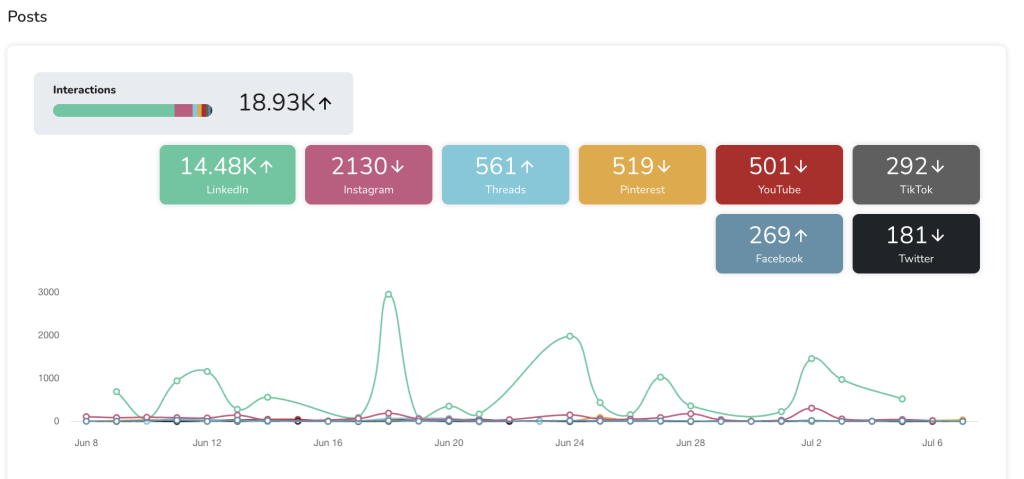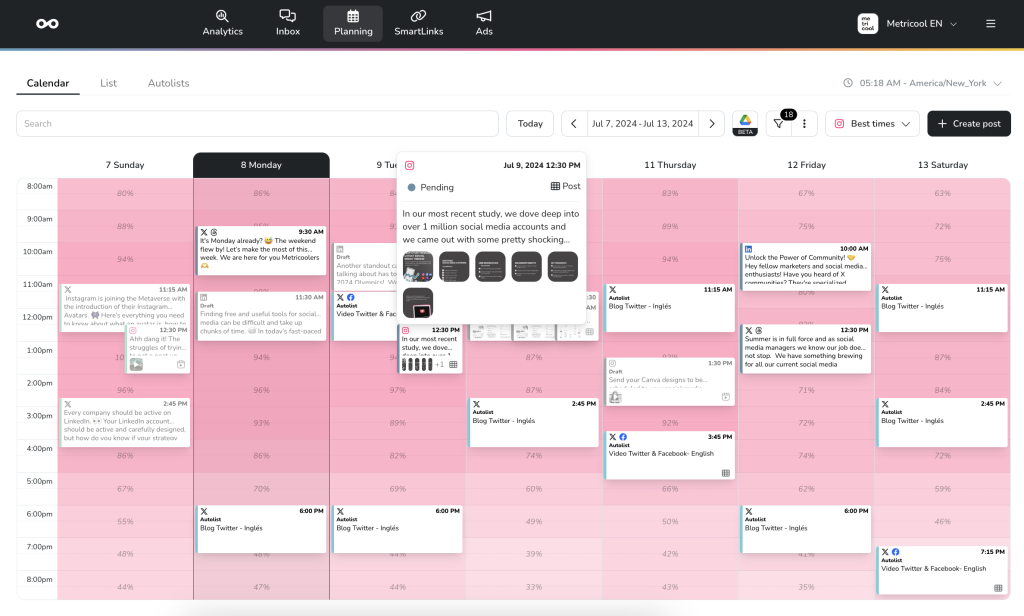Like most websites, we use own and third party cookies for analytical purposes and to show you personalised advertising or based on your browsing habits.
Generally, the information does not directly identify you, but can provide you with a more personalised web experience. Because we respect your right to privacy, you may choose not to allow us to use certain cookies. However, blocking some types of cookies may affect your experience on the site and the services we can offer.
For more information, you can read our cookie policy.
How to Create Google Ads Campaigns in 2024
Google is the largest search engine in the world, with ads reaching over 90% of the global internet population. Businesses large and small, local and global, have endless opportunities to scale their business and convert users with Google advertising campaigns.
There are ample opportunities and ad placements for businesses to tap into, making this avenue so resourceful. However, understanding how to create optimized Google ads campaigns is no easy journey. By the end of this article, you will have a strong foundation for your Google ads strategy to start implementing campaigns.
What are Google Ads?
Google Ads is the network’s paid advertising platform, allowing businesses to promote their products and services through multiple Google channels, including Google’s native channels including YouTube, Maps, and Shopping, as well as non-Google sites such as Amazon, Target, Walmart, etc.
This allows businesses to customize their ads through images, videos, and informational assets that can drive traffic to their website or landing pages. During the campaign-building process, brands can select their campaign objectives, bid strategy, budget, and duration to align with their online advertising strategy.
If you have used Google or any Google network partners, chances are you have seen or interacted with an advertising campaign. Algorithmic data collection aligns customers with brands and products they are interested in.
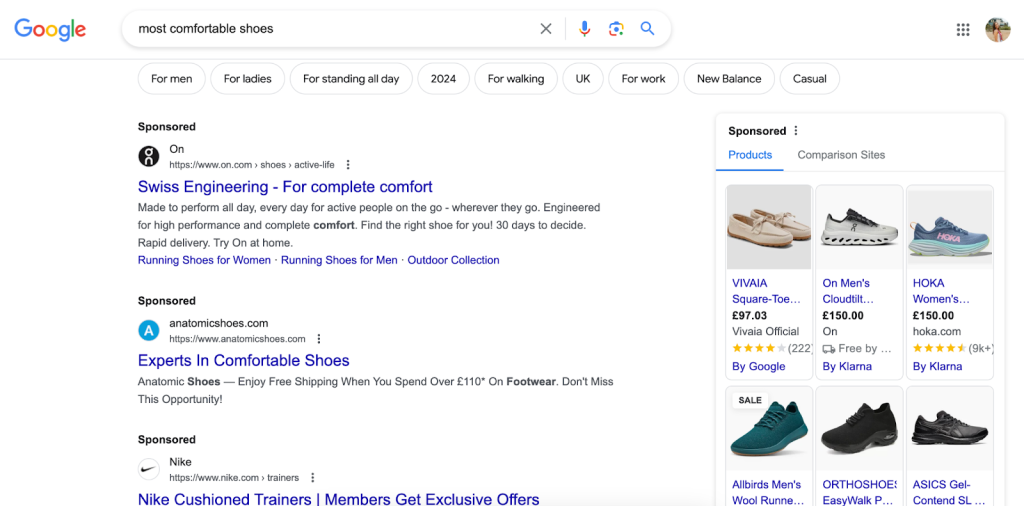
How to Create a Google Ads Campaign
To run Google Ads, you must have a Google Ads account, which you can create through this link. Then you will add your business information including your name, website, phone number, and app.
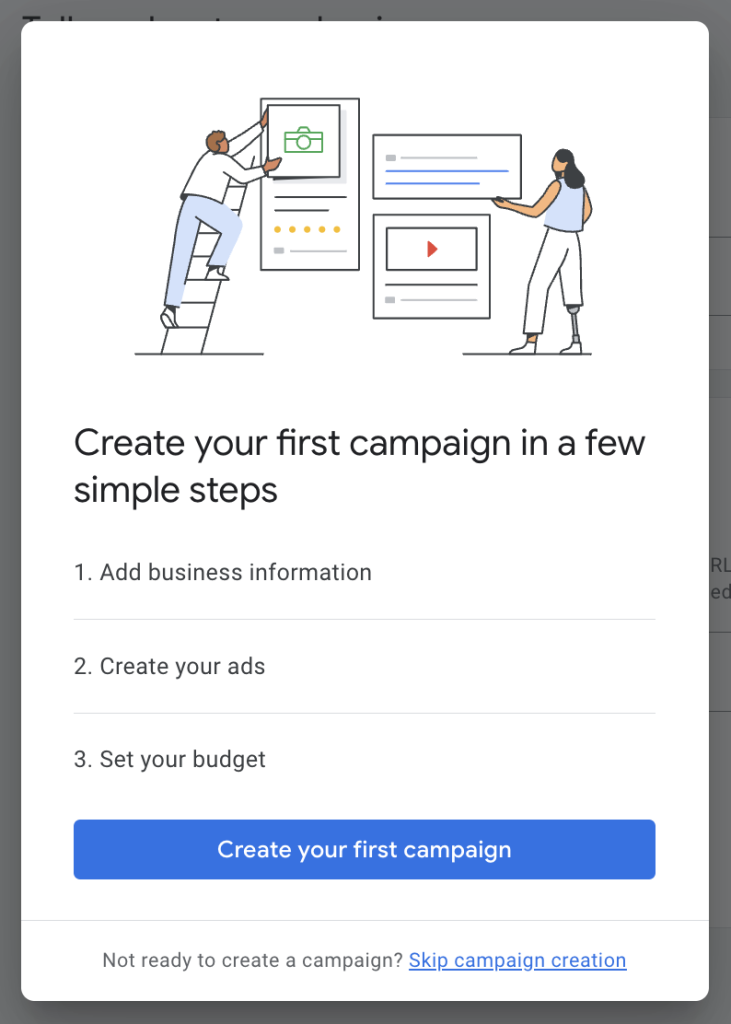
From here, you have two options for creating your first campaign: through Google Ads Manager or with Metricool’s Google Ads. Both of these platforms offer free ad tools, to run and analyze campaigns.
Let’s run through how to create Google ads campaigns for each!
Google’s Native Ads Manager
As mentioned above, the first way to create Google campaigns is through the network’s native advertising tool. After entering your business information, you will access the main Google ads dashboard, which will look something like this:
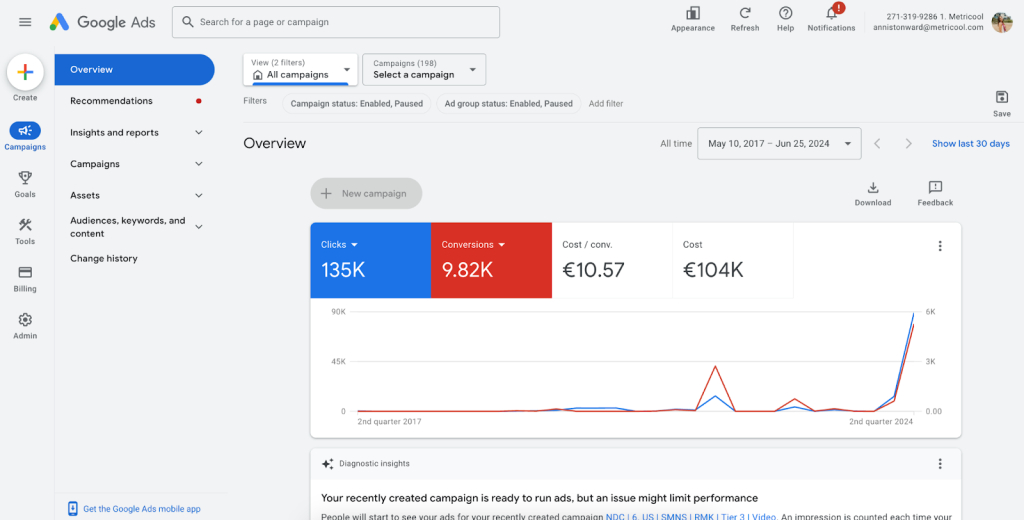
To create a new campaign, click on “New campaign”. The first step will be selecting your campaign objective, which you can choose from the following:
- Sales: Drive sales online, in-app, by phone, or in-store
- Leads: Get leads and other conversions by encouraging customers to take action
- Website traffic: Get the right people to visit your website
- App promotion: Get more installs, engagement, and pre-registration for your app
- Awareness and consideration: Reach a broad audience and build interest in your products or brand
- Local store visits and promotions: Drive visits to local stores, including restaurants and dealerships.
You can also create a campaign without a goal’s guidance, to fully customize your campaign.
After selecting your objective, select a conversion goal and source to measure your campaign success and conversions accurately. This will depend on your campaign objective for example, a leads campaign can include a phone call leads with a call from an ads conversion source.
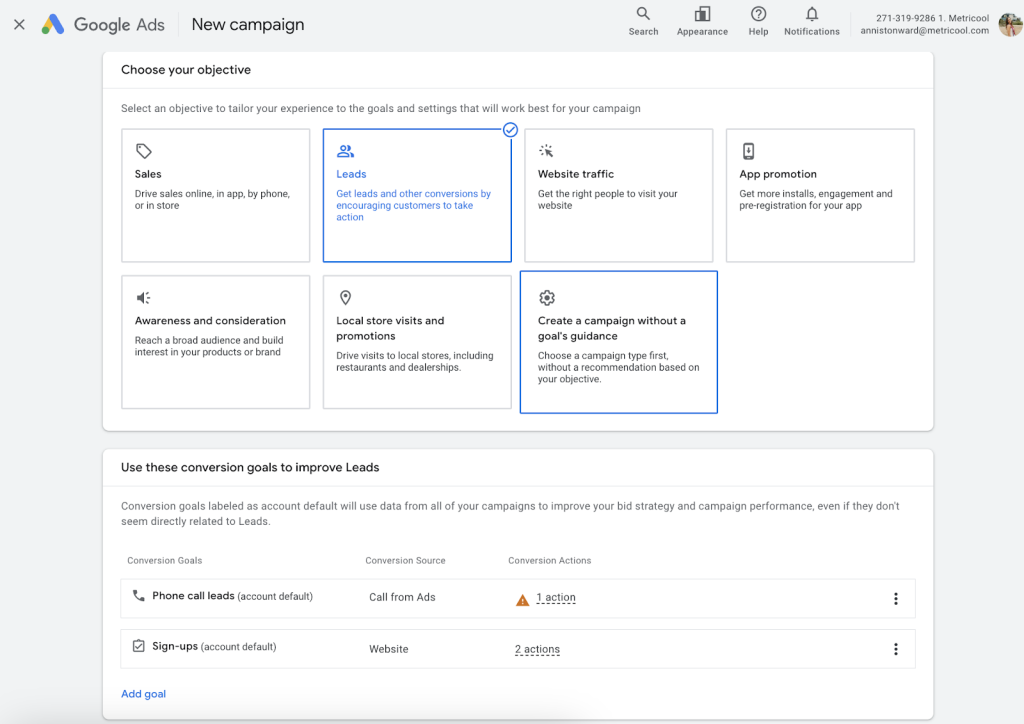
From here, you will decide on the campaign type, which you can choose from the following:
- Search: Appear in Google’s search results to get in front of high-quality leads
- Performance Max: Automate campaigns to reach audiences on multiple platforms with one campaign
- Demand Gen: Drive conversions on YouTube, Discover, and Gmail with images and video ads
- Display: Reach customers across 3 million sites and apps
- Shopping: Showcase your products to users as they shop
- Video: Reach and convert users through YouTube videos
Depending on the type of campaign you choose, you will be prompted to either enter your company’s website URL, your products, or the way you would like to reach your goal.
Then, select a campaign name, select the bid strategy, networks, locations, languages, audience segments, keywords, and assets. These settings will specify who you are targeting and how you will target them.
When it comes to building your campaign audience, browse your audience by: detailed demographics, interests, market, how they have interacted with your business, and your combined audience segments. This allows you to customize your segmentation to align with your campaign objectives and assets.

The next step will be to tailor your campaign assets, designs, copies, keywords, and CTAs. This will be the forefront of your campaign and what grabs users’ attention. Ensure this tells a story in a way that ties back to your overall campaign objectives and what you’re trying to achieve.
Finally, set your campaign budget and review the total campaign before publishing. After publishing, Google will automatically start reviewing your campaign. Once it’s approved, you will receive a notification that your campaign is eligible to run.
Metricool: A Comprehensive Social Media & Ads Management Platform
The second way to run Google ads campaigns is through Metricool, an all-in-one social media management and ads platform. This allows you to create and analyze campaigns for Meta and Google ads.
To create ads, you need to have an active Metricool account. You can create your FREE (for life) account here:
Once inside the Metricool dashboard, navigate to the ads section. Here you will see all of your active campaigns. Click “Create Campaign” to get started.
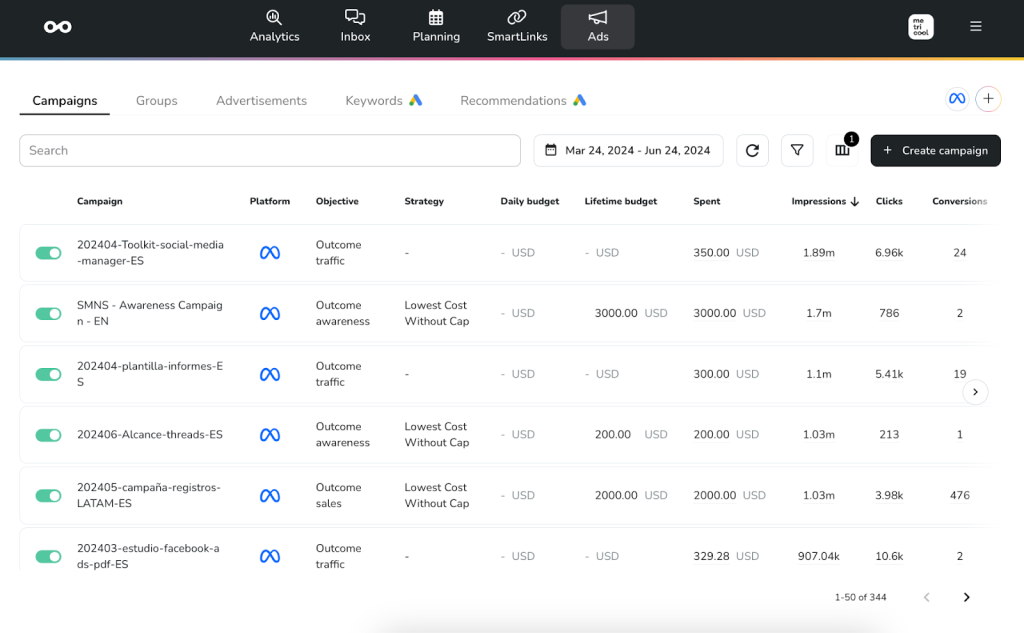
Inside the configuration page, add your campaign name, the final URL, and toggle on Google ads. Select between Display and Search objectives, and select if you want your ad to appear on Google Networks or Google Partner Networks.

Next, select the locations you want to target. This can be as specific as cities, as broad as counties, or a mix of both. Then, segment your audience by gender, age, and language.
Define your audience by their interests, job titles, industries, demographics, etc. On the next page, enter target keywords that align with what your target audience searches for related to your business. This can include client pain points, product specifics, and common queries that define your business.
Next will be designing your campaign assets, in which you can include multiple. Include the following details
- Ad name
- Website URL
- Title 1
- Title 2
- Title 3
- Description 1
- Description 2
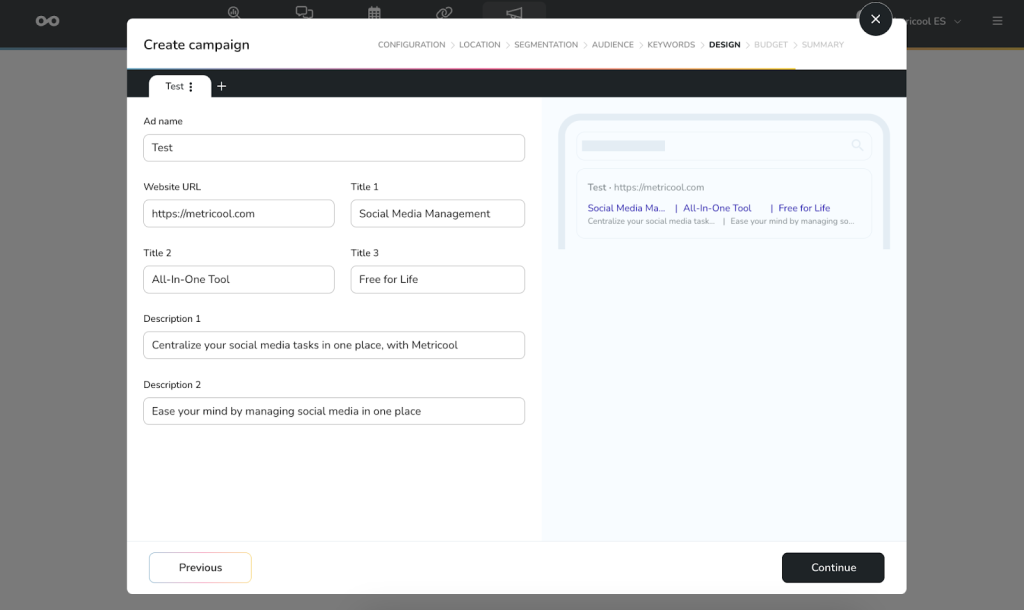
Finally, select your campaign budget and duration. Choose a lifetime or daily budget, automatic or manual bid cap, and custom, 1 week, or 1 month duration. Once you have reviewed your campaign, select publish and the campaign will go live on the set date.
While you create Meta and Google Ads, manage the rest of your social media networks in the same place, with Metricool. View your social media analytics and performance, reply to your DMs and post comments, schedule and auto-publish content, analyze your competitors, and measure your social media strategy.
